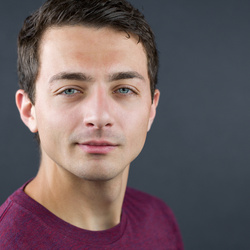The Fujifilm GFX100 II isn’t a casual pick for portraits. It’s a 102-megapixel medium format body that gives you detail and tonal range most full frame systems can’t match.
Coming to you from Samuel Elkins, this straightforward video shows why the Fujifilm GFX100 II medium format mirrorless camera has become his main tool. He lays out the kit he brings to a typical portrait session, starting with the GFX100 II paired with three lenses: the 32–64mm, the 45–100mm, and the 55mm f/1.7. The combination covers the wide-to-tele range without feeling like overkill, and each lens plays a role. Elkins points out how the longer zoom at 100mm delivers pleasing compression on the big sensor, while the 55mm opens up to f/1.7 for shallow depth of field and low light. The GFX100 II’s stabilization helps keep things sharp even when shooting handheld, which matters if you’re working without assistants.
What makes this camera stand out in practice is how it balances resolution with usability. Elkins talks through how he can shoot a full portrait session with the GFX100 II without it slowing him down. It’s a high-resolution medium format system, but it doesn’t lock you to a tripod or force you into slow, careful setups. With 8 fps continuous shooting, fast autofocus, and stabilization, it handles like a modern mirrorless while still giving you the medium format look. That means pulling massive detail out of files while keeping the pace of a small, natural shoot.
Key Specs
-
Sensor Resolution: 102 megapixel (11,648 x 8,736)
-
Image Sensor: 43.8 x 32.9 mm CMOS
-
Stabilization: 5-axis sensor-shift IBIS
-
ISO: 80–12,800 (extended 40–102,400 for photo; 100–25,600 for video)
-
Continuous Shooting: Up to 8 fps
-
Internal Recording: H.264/H.265/ProRes up to 8K 23.98/24.00 fps
-
Video Output: Raw via HDMI, 4:2:2 10-bit up to 8K
-
Viewfinder: 9.44-million-dot OLED, approx. 1x magnification
-
LCD: 3.2" 3-way tilting touchscreen
-
Media: SD UHS-II and CFexpress Type B slots
-
Battery: NP-W235, approx. 540 shots
-
Dimensions/Weight: 6 x 4.6 x 3.9 in; 2.271 lb with battery, media, viewfinder
Elkins leans heavily on the GFX sensor’s rendering. You can hear his excitement when he switches focal lengths and sees how the compression at 100mm changes the shot. He talks about how much he enjoys the look straight out of camera, especially when paired with subtle lighting adjustments. The files hold skin tones and highlights in a way that smaller formats struggle with. That’s where the GFX100 II really earns its place as a portrait camera: it gives you latitude to shape light without pushing files too far in post.
The session itself shows how the camera fits into a natural flow. At one point Elkins directs tiny pose shifts, steps into different windows of light, and moves outdoors into a canyon, all without swapping bodies or fighting gear. The GFX100 II keeps up, which is part of why it has become his go-to for portraits. If you’ve thought of medium format as slow or limiting, this video makes a case for the opposite. Check out the video above for the full rundown from Elkins.






